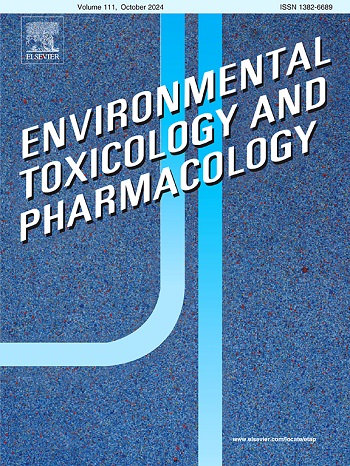PM10 exposure in beauty salons: impact on A549 cell viability, cell cycle, oxidative stress, and mutagenicity
IF 4.2
3区 环境科学与生态学
Q2 ENVIRONMENTAL SCIENCES
引用次数: 0
Abstract
Beauty salons are unique indoor environments where elevated PM10 levels may arise from frequent use of personal care and cosmetic products, potentially exposing salon workers and clients to harmful chemicals. This study aimed to assess the biological effects of PM10 collected indoors and outdoors of a beauty salon, as well as the mutagenic potential of PM10-bound polycyclic aromatic hydrocarbons (PAHs). Using the MTT test, a dose-dependent decrease in cell viability was observed in human alveolar adenocarcinoma cells (A549) exposed to PM10, with indoor samples causing more pronounced effects than outdoor and background air. Indoor PM10 exposure also increased intracellular reactive oxygen species (ROS) and caused an arrest in the G1 phase of cell cycle. These biological responses were correlated with the concentrations of various compounds, including organic carbon (OC), aliphatic carboxylic acids, dicarboxylic acids, and alkyl esters of fatty acids. No mutagenic effects were observed for all PAH samples tested using the Salmonella typhimurium strain TA98. The findings suggest that beauty salons might have elevated levels of PM10, capable of inducing cytotoxic and oxidative stress-related effects and cell cycle disruption. Although no mutagenic activity was detected, the presence of harmful chemicals highlights potential health risks for workers and clients.
美容院PM10暴露:对A549细胞活力、细胞周期、氧化应激和致突变性的影响
美容院是一种特殊的室内环境,频繁使用个人护理和化妆品可能会导致 PM10 水平升高,从而使美容院工作人员和顾客接触到有害化学物质。本研究旨在评估在美容院室内外收集到的 PM10 对生物的影响,以及 PM10 结合的多环芳烃(PAHs)的诱变潜力。通过 MTT 试验,观察到暴露于 PM10 的人肺泡腺癌细胞(A549)的细胞活力呈剂量依赖性下降,室内样本比室外和背景空气造成的影响更明显。室内 PM10 暴露还增加了细胞内的活性氧(ROS),并导致细胞周期的 G1 阶段停滞。这些生物反应与各种化合物的浓度相关,包括有机碳(OC)、脂肪族羧酸、二羧酸和脂肪酸烷基酯。使用鼠伤寒沙门氏菌菌株 TA98 对所有多环芳烃样本进行测试,均未观察到诱变效应。研究结果表明,美容院中的可吸入颗粒物(PM10)含量可能会升高,从而诱发细胞毒性、氧化应激相关效应和细胞周期破坏。虽然没有检测到诱变活性,但有害化学物质的存在凸显了对工作人员和顾客健康的潜在风险。
本文章由计算机程序翻译,如有差异,请以英文原文为准。
求助全文
约1分钟内获得全文
求助全文
来源期刊
CiteScore
7.00
自引率
4.70%
发文量
185
审稿时长
34 days
期刊介绍:
Environmental Toxicology and Pharmacology publishes the results of studies concerning toxic and pharmacological effects of (human and veterinary) drugs and of environmental contaminants in animals and man.
Areas of special interest are: molecular mechanisms of toxicity, biotransformation and toxicokinetics (including toxicokinetic modelling), molecular, biochemical and physiological mechanisms explaining differences in sensitivity between species and individuals, the characterisation of pathophysiological models and mechanisms involved in the development of effects and the identification of biological markers that can be used to study exposure and effects in man and animals.
In addition to full length papers, short communications, full-length reviews and mini-reviews, Environmental Toxicology and Pharmacology will publish in depth assessments of special problem areas. The latter publications may exceed the length of a full length paper three to fourfold. A basic requirement is that the assessments are made under the auspices of international groups of leading experts in the fields concerned. The information examined may either consist of data that were already published, or of new data that were obtained within the framework of collaborative research programmes. Provision is also made for the acceptance of minireviews on (classes of) compounds, toxicities or mechanisms, debating recent advances in rapidly developing fields that fall within the scope of the journal.

 求助内容:
求助内容: 应助结果提醒方式:
应助结果提醒方式:


